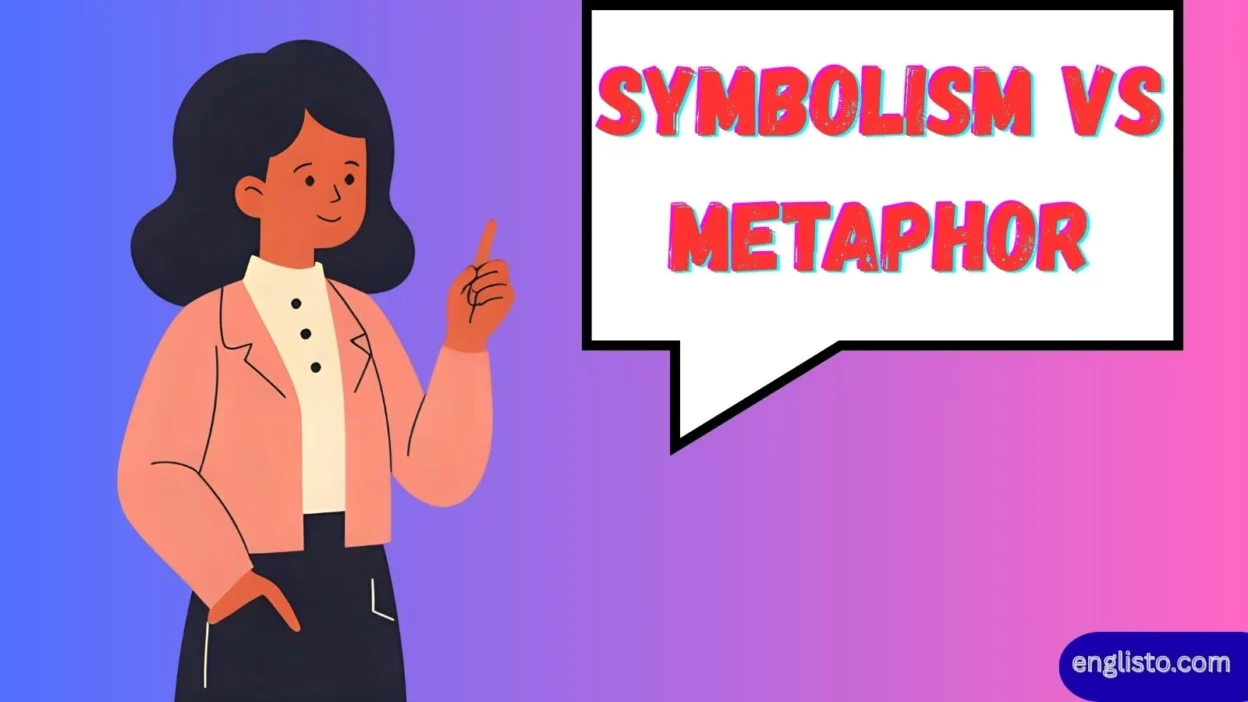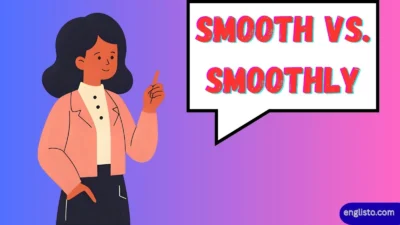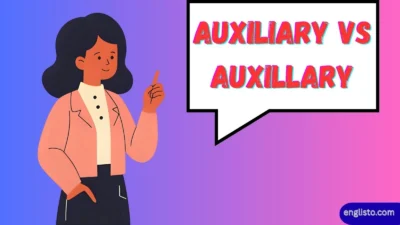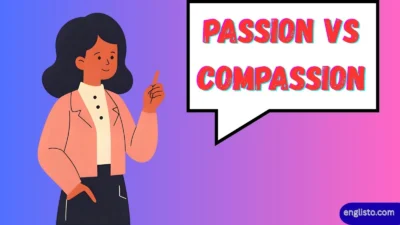Language is more than words strung together—it’s a living, breathing system that carries meanings, emotions, and experiences. Writers, poets, and speakers use countless tools to enrich expression, but few are as fascinating—and as often confused—as symbolism and metaphor. Both give depth to communication, painting vivid pictures in the reader’s mind, but they do so in distinct ways. Understanding the key differences, applications, and scope of these two devices can transform how you read, write, and interpret literature. Symbolism vs Metaphor.
In this guide, we’ll explore their definitions, functions, examples, and cultural significance. Along the way, we’ll compare their roles in literature, storytelling, and everyday language, while highlighting how they influence mood, meaning, and interpretation.
What Is Symbolism?
At its heart, symbolism is when a concrete object, person, action, place, or color stands for an abstract idea beyond its literal meaning. A symbol isn’t just a decoration—it’s a bridge between the tangible and the intangible.
- Definition: The use of objects, actions, or images to represent broader, abstract concepts.
- Scope: Wide and open-ended, allowing multiple interpretations depending on cultural, historical, or personal context.
- Function: To enrich meaning, evoke emotions, and add depth by layering significance beneath the surface of a narrative.
Read More: Between vs Among: The Complete Guide to Usage, Examples, and Common Mistakes
Examples of Symbolism
- A dove often symbolizes peace across cultures.
- The letter “A” in Nathaniel Hawthorne’s The Scarlet Letter initially stands for adulterer, but later evolves to mean able.
- A rainbow can symbolize hope, renewal, and promise.
- Wedding rings symbolize commitment, eternity, and love.
| Symbol | Represents | Cultural or Contextual Significance |
| Dove | Peace | Universally recognized, religious and political contexts |
| Black | Death, sorrow | Varies across cultures, sometimes power or mystery |
| Rose | Love, passion | Common in Western poetry and art |
| Clock | Time, inevitability | Mortality, deadlines, urgency |
| Butterfly | Transformation | Growth, freedom, spiritual rebirth |
Symbolism thrives on layered meaning. One image might carry several interpretations at once, depending on who reads it and where it appears. That’s what makes symbols so powerful—and sometimes so slippery to pin down.
What Is a Metaphor?
Unlike symbolism, metaphor is more direct. It’s a figure of speech where one thing is compared to another—not using “like” or “as” (that’s a simile), but by saying one is the other.
- Definition: A rhetorical device that directly equates one thing with another to highlight shared qualities.
- Scope: Specific and immediate, designed to create a vivid, impactful connection in the reader’s mind.
- Function: To describe, exaggerate, or emphasize traits by linking seemingly unrelated things.
Examples of Metaphor
- “Hope is the thing with feathers” (Emily Dickinson).
- “Time is a thief”—suggesting time steals moments from us.
- “She is a night owl”—meaning she stays up late, not that she’s literally a bird.
- “The classroom was a battlefield”—students struggling through exams.
| Phrase | Metaphorical Meaning |
| “Life is a rollercoaster” | Life is full of ups, downs, and surprises |
| “Time is money” | Time is precious and must be spent wisely |
| “He’s a hungry lion” | Someone fierce, aggressive, dominant |
| “New York is a jungle” | Chaotic, bustling, unpredictable |
| “She’s the apple of his eye” | Someone deeply cherished |
Metaphors are concise, striking, and imaginative. They don’t carry layers in the same open-ended way as symbols; instead, they aim for clarity and emotional impact in a single stroke.
Symbolism vs. Metaphor: Key Differences
Although both enrich language, symbolism and metaphor serve distinct purposes. The confusion arises because they sometimes overlap—a single image can be symbolic in one context and metaphorical in another.
| Aspect | Symbolism | Metaphor |
| Definition | A concrete object, action, person, or color represents an abstract idea | A figure of speech that directly compares two different things |
| Scope | Broad, open-ended, culturally and contextually dependent | Focused, specific, immediate |
| Function | Adds multiple layers of meaning to a story or work | Creates vivid, impactful connections in a concise phrase |
| Interpretation | Evolving, context-dependent | Usually direct and immediate |
| Examples | Dove = peace, Scarlet “A” = shame/ability, rainbow = hope | “Hope is the thing with feathers,” “Time is money,” “She is a night owl” |
Bottom line:
- Symbolism carries abstract ideas throughout a story or work.
- Metaphor directly compares two things to spark imagination.
How Symbolism Works in Literature
Authors often weave symbols into narratives as part of themes and motifs. These symbols don’t always announce themselves; they require the reader to observe, decode, and analyze.
- Hawthorne’s Scarlet Letter – The letter “A” evolves in meaning across the novel, mirroring the character’s transformation.
- Frost’s “The Road Not Taken” – The two roads symbolize life choices and their consequences.
- Orwell’s Animal Farm – Characters like pigs and horses symbolize political figures and ideologies.
Symbols often evolve with the story, changing meaning depending on context, character growth, and reader interpretation.
How Metaphor Shapes Expression
Metaphors are workhorses of language—common in poetry, novels, speeches, and everyday talk. They create immediacy, helping the reader feel or see something instantly.
- Shakespeare’s plays – Overflowing with metaphors that enhance themes, such as “All the world’s a stage.”
- Langston Hughes – His poems use metaphors to embody social struggles: “What happens to a dream deferred? Does it dry up like a raisin in the sun?”
- Everyday speech – We casually say “spend time,” “carry weight,” or “burn bridges,” all of which are metaphors.
Metaphors help us conceptualize abstract ideas by anchoring them in concrete images.
Where They Overlap and Intertwine
Sometimes, a symbol can also function as a metaphor, depending on its use.
- A butterfly in a novel might symbolize transformation (symbolism). But if a character is directly called a butterfly, highlighting fragility or beauty, that’s a metaphor.
- The lion can symbolize courage universally (symbolism). But when you say, “He’s a lion in battle,” that’s metaphorical.
This overlap explains why people often confuse the two—but the distinction lies in how meaning is conveyed.
Why the Distinction Matters
Understanding the difference isn’t just academic—it changes how we read, write, and communicate.
- Writers use symbols to embed themes and deepen the resonance of their work.
- Speakers use metaphors to hit hard, fast, and vividly.
- Readers gain richer insights by recognizing whether a passage relies on layered symbolism or a direct metaphor.
In short, distinguishing between the two helps us unlock the emotional and intellectual power of language.
Practical Tips for Writers
- Use symbolism when you want to carry an idea throughout a whole story, poem, or narrative.
- Use metaphor when you want to deliver a striking, immediate image.
- Mix them wisely: Too many metaphors can overwhelm, while overloading symbols may confuse readers.
- Observe culture and context: What symbolizes purity in one culture (white) might symbolize mourning in another.
FAQs
What’s the main difference between symbolism and metaphor?
Symbolism represents abstract ideas using objects, actions, or images, while metaphor directly compares two things to highlight similarities.
Can something be both a symbol and a metaphor?
Yes. For example, a lion can symbolize courage in a story, but calling a person a lion is a metaphor.
Why is symbolism considered open-ended?
Because its meaning depends on cultural, personal, or historical context. The same symbol may mean different things to different readers.
Are metaphors always poetic?
No. Metaphors appear everywhere—from casual speech (“time is money”) to political speeches and advertising.
Which is more powerful, symbolism or metaphor?
Neither is inherently stronger; it depends on purpose. Symbolism enriches long narratives with depth, while metaphor makes language punchy and memorable.
Conclusion
Symbolism and metaphor are not interchangeable—they’re distinct tools, each with its own scope, function, and impact. Symbolism thrives in layered meaning, cultural context, and narrative evolution, while metaphor excels in direct, imaginative, and impactful comparisons. Together, they form the backbone of expressive, powerful language, enabling writers and readers alike to explore the depths of human thought, emotion, and creativity.
By recognizing the nuances between them, you not only sharpen your literary analysis but also elevate your own writing. After all, the best communication doesn’t just tell—it resonates, lingers, and transforms.



